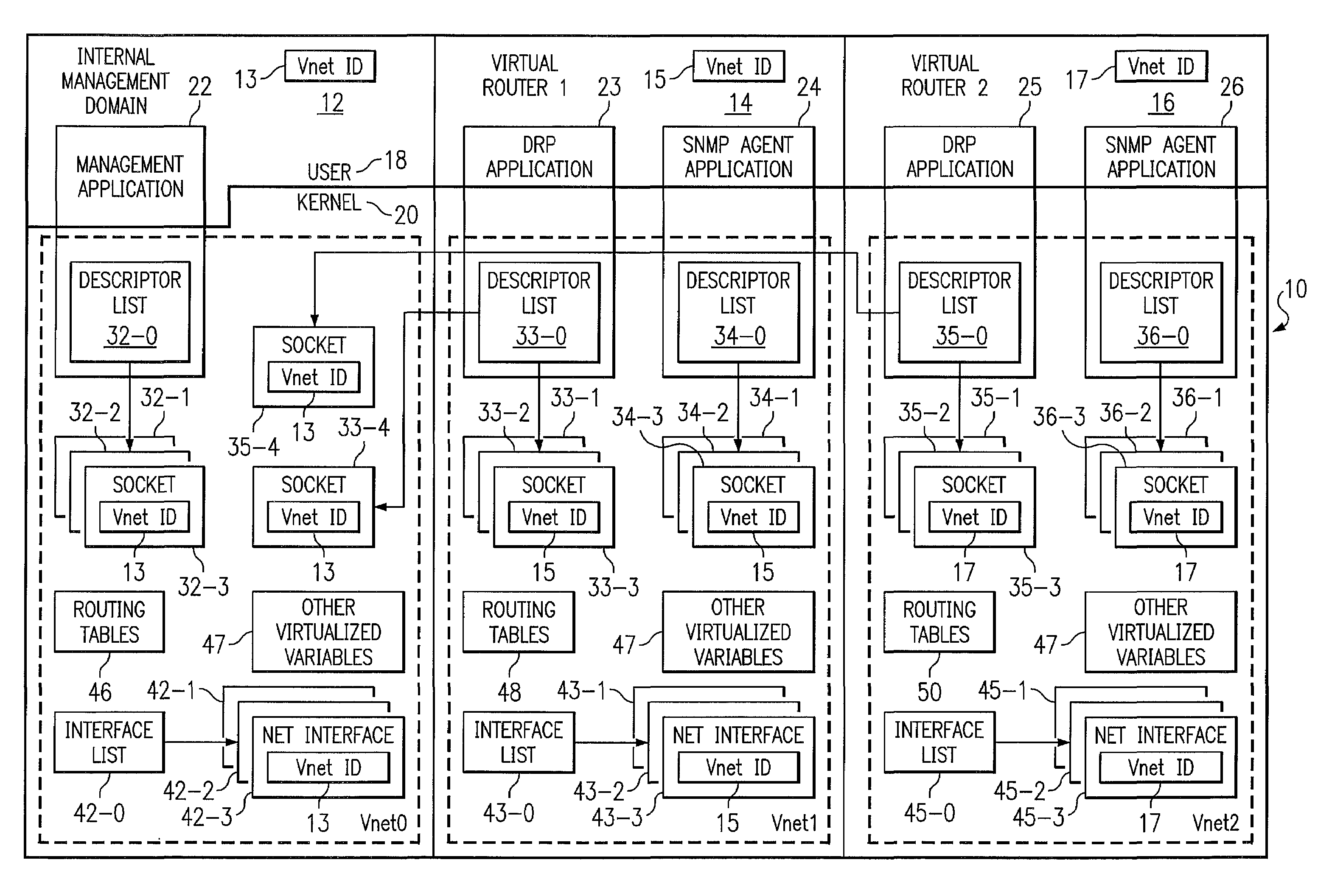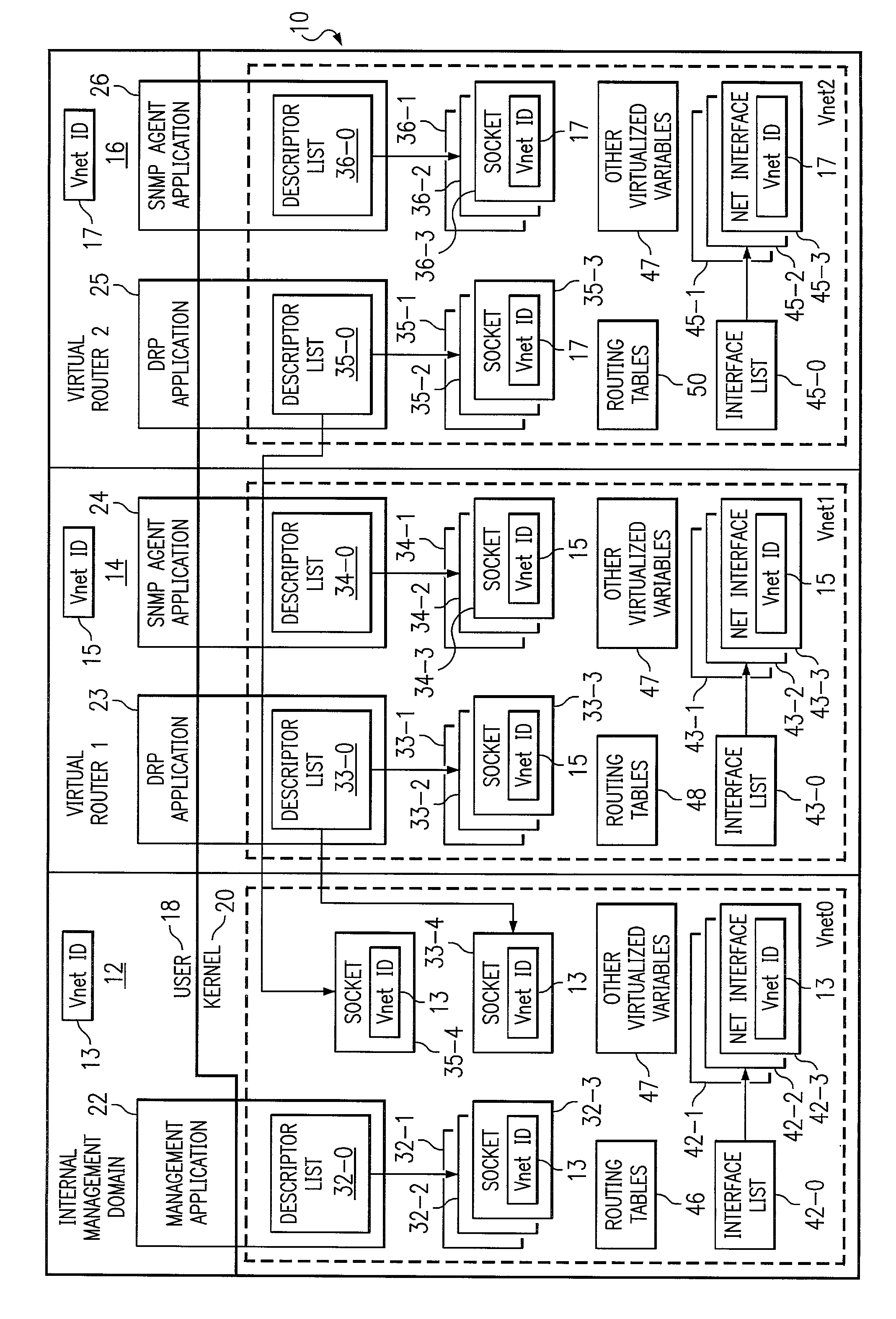System and method for router virtual networking
a router and virtual networking technology, applied in the field of communication networks, can solve the problem that not every v-net domain supports a virtual router, and achieve the effect of convenient testing
- Summary
- Abstract
- Description
- Claims
- Application Information
AI Technical Summary
Benefits of technology
Problems solved by technology
Method used
Image
Examples
Embodiment Construction
[0013]In embodiments of the present invention, a host network router is logically partitioned into multiple virtual networking domains sharing a common operating system. FIG. 1 is a logical diagram illustrating the principles of router virtual networking, according to an embodiment of the present invention. In the implementation of FIG. 1, a host router 10 is logically partitioned into v-net domains 12, 14, and 16 that are associated with networking systems. Each v-net 12, 14, 16 has a unique v-net ID address 13, 15, 17, in accordance with network protocols. Host router 10 and each of v-nets 12, 14, 16 are further logically subdivided into two spaces, shown in FIG. 1 separated horizontally by a solid line, namely a user level 18 and a kernel level 20 of the shared common operating system (OS), for example a version of FreeBSD. The present FreeBSD operating system runs on the host router Master Control Processor (MCP), described for example in U.S. application Ser. No. 09 / 703,057, en...
PUM
 Login to View More
Login to View More Abstract
Description
Claims
Application Information
 Login to View More
Login to View More - R&D
- Intellectual Property
- Life Sciences
- Materials
- Tech Scout
- Unparalleled Data Quality
- Higher Quality Content
- 60% Fewer Hallucinations
Browse by: Latest US Patents, China's latest patents, Technical Efficacy Thesaurus, Application Domain, Technology Topic, Popular Technical Reports.
© 2025 PatSnap. All rights reserved.Legal|Privacy policy|Modern Slavery Act Transparency Statement|Sitemap|About US| Contact US: help@patsnap.com


